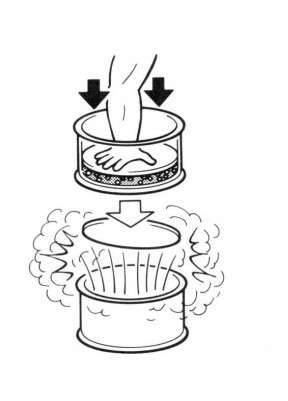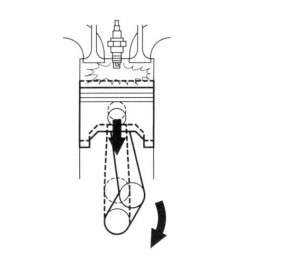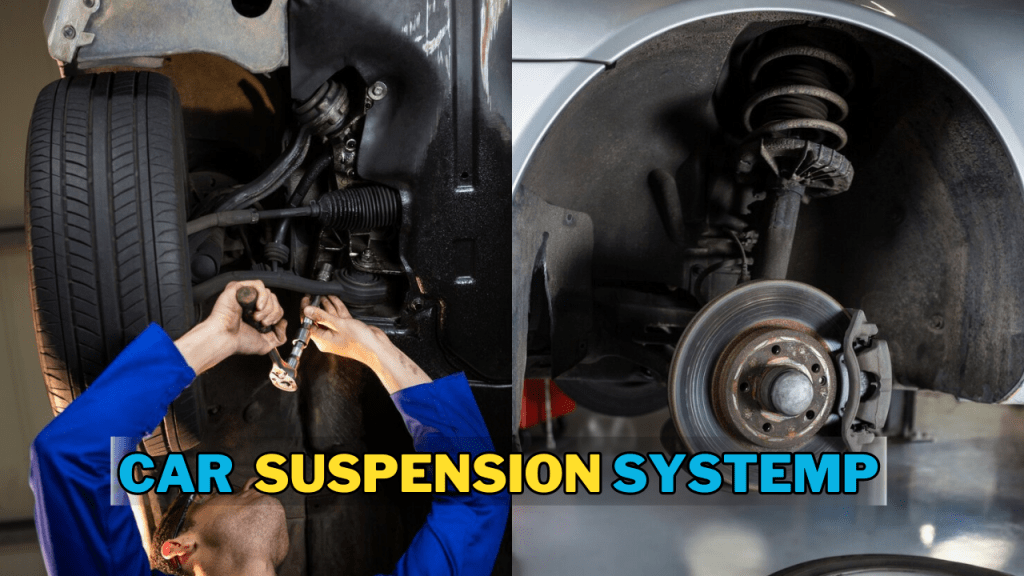A car engine works through a process known as the internal combustion engine, where fuel and air are mixed, compressed, and ignited within the engine’s cylinders. This process converts chemical energy from the fuel into mechanical energy that propels the vehicle.
A car is heavy. Also, a car needs to run with people and heavy luggage. For this reason, a car needs a large force. The engine creates the force (power) for that. Also, cars must run on various roads, such as slopes and highways. Therefore, a driver needs to be able to control the force generated by the engine freely.
However, it is such an engine that can continue to rotate for a long time, but cannot be started on its own. Therefore, we need to give force from the outside only at start-time.
Here’s a simplified explanation of how does the engine work in a car
How the engine generates power
Mechanism of the power generation. Let’s learn how does the engine work in a car.

A gasoline engine burns fuel and takes out its combustion (explosion) pressure as power.
Then, how do we change this combustion pressure to the force to run?
When running a bicycle, we rotate the pedal by moving the knee up and down. Then the bicycle moves forward. In the engine, in addition to the piston reciprocating the combustion pressure of the fuel, it transfers to the rotary motion by transmitting the force to the crankshaft.
Four strokes of the Gasoline engine.
The four-stroke cycle, also known as the Otto cycle, is a fundamental process in the operation of internal combustion engines, including those used in most cars. The four strokes represent the sequence of events that occur in each cylinder of the engine during one complete cycle.

Here are the four strokes.
① (Intake stroke) To inhale the air-fuel mixture
It is the process of sucking gasoline and air. They are the power source of the engine.
② (Compression stroke) To compress the air-fuel mixture
It is a process of compressing the air-fuel mixture and generating greater power.
③ (Combustion stroke) To burn the air-fuel mixture
It is a process of generating power by exploding and burning the compressed air-fuel mixture rapidly by the spark of the spark plug.
④ (Exhaust stroke) To extrude burned gas
It is a process of pushing the combustion gas out of the cylinder. Then, new mixture can be sucked for the next combustion.
Intake stroke ( gasoline engine )
With the intake valve open, air and fuel are sucked into the cylinder because the piston moves from the top dead center to the bottom dead center. This is because the inside of the cylinder becomes negative pressure when the piston is lowering.
Negative pressure is a pressure that is lower than the prevailing atmospheric pressure. Because air flows from the higher pressure to the lower pressure, air and fuel flow into the cylinder.
A path through which air passes
The air suction port in front of the vehicle sucks air. Then the air goes to the air cleaner in order to remove dust by elements in the air cleaner.

The cleaned air-
- 1) is adjusted in quantity with a throttle valve,
- 2) passes through the intake manifold, and
- 3) is sucked into the cylinder.
Air cleaner – When dust in the air enters the engine, it expedites (advances) wear inside the engine. Therefore, we need to remove the dust in the air by air cleaner.
Throttle valve – The valve opens depending on the amount of depression of the accelerator pedal. It adjusts the amount of air (that is) sucked into the cylinder.
Intake manifold – This is a separate passage of each cylinder to distribute air to each cylinder.
Pathways through which gasoline passes
The car keeps gasoline in the fuel tank. Fuel pump pumps up gasoline in the fuel tank.
Then, the fuel filter removes the dust from the fuel. Thereafter, the gasoline is sprayed in the form of mist from the injector to the intake manifold, mixed with air, and becomes an air-fuel mixture. Then it goes into the cylinder.

Fuel pump – It is a device of pumping fuel from the fuel tank to the engine. The mechanism does not work when the engine is stopped for safety. A net called a strainer at the suction port in order not to inhale large trash and rust etc. from the tank.
Fuel tank – It is a tank that keeps the fuel, and has a fuel pump that pumps fuel.
Fuel filter – It is a device to remove fine dust and rust that the strainer of the fuel pump cannot remove from the fuel.
Fuel pipe – It is a metal fuel path. It connects each part. It is strong and is used for parts that do not require movement.
Fuel hose – It is made of special rubber that does not melt with gasoline in the fuel path connecting each part. It is used for the part where movement is necessary.
Injector – It is a device that injects fuel into the intake manifold. It operates with electricity and injects fuel in the form of mist.
Compression stroke

- 1) The intake valve ,which is opened in the suction stroke, is closed,
- 2) the cylinder is sealed,
- 3) the piston moves from the bottom dead center to the top dead center and
- 4) the piston compresses the air-fuel mixture.
When the air-fuel mixture is not compressed, the density of the air-fuel mixture is low and air and gasoline are dispersed. That is why the combustion becomes gentle and only the force that lifts the lid is given out. When compressed, the density of the air-fuel mixture becomes high and the air and gasoline are densely packed. That is why combustion burns faster and enough power blows off the lid. even with the same amount of air-fuel mixture, the combustion pressure increases with compression. A large force is required to compress, but you can get a bigger force than the force you use for compression.
Also, the gas generates heat when compressed. By compressing, the mist-like gasoline is vaporized by heat and becomes more combustible mixture. This is one of the reasons of obtaining greater power.
Combustion Stroke
The combustion stroke is the process of burning the compressed air-fuel mixture;

- 1)Ignite the compressed air-fuel mixture with spark of the spark plug and then,
- 2) generate force.
Ignite a compressed mixture
The compressed air-fuel mixture is ready for burning if there is spark. The spark plug ignites the mixture at an appropriate timing. So, how make sparks by spark plug?
Many of you might see thunder falling down into lightning rods etc. This happens because high voltage is generated in the air and falls to the ground as an electric spark. The spark plug also generates an electric spark in the gap between the center electrode of the plug tip and the ground electrode. A high voltage as high as 10,000 to 30,000 V (volts) generates an electric spark, but because the car only has a power supply of 12 V, the car needs a device to generate high voltage. Boost the battery voltage to a high voltage with an ignition coil. This high voltage is sent to the spark plug and it becomes a spark.
Timing to ignite the air-fuel mixture
The timing to spark the spark to each cylinder is called ignition timing, and the engine is designed to spark the spark at the most efficient ignition timing.
For example, imagine you push a child riding in a swing. When pushing from behind while the swing comes up, the direction in which the swing is moving and the pushing direction are different. Therefore, we lose some power.
Also, if you push the swing from behind where the swing has dropped considerably, you will have to lose it because you have to push it while chasing the swing. To sum up, you can press the swing most strongly by pressing from behind at the moment the swing rises and begins to fall. In the same way, by applying the combustion pressure to the piston when the piston starts descending from the top dead center, the force can be transmitted efficiently. It can be realized by optimizing the ignition timing.
Power comes out when gasoline burns
The intake and compressed air-fuel mixture burns (explodes) sharply due to the electric spark of the spark plug. The inside of the combustion chamber becomes high temperature and high pressure, and the large force push down the piston rapidly and the piston gives the crank shaft rotational power.
Of the four strokes of gasoline engine operation, only this combustion process generates the power.[KE3] Conversely, the other three strokes require torque. The reason why the engine can continue to rotate is the power obtained in this combustion process covers the rotational force necessary for the other three strokes. In other words, the piston pushed down in the combustion stroke turns to the next compression with its momentum.
Exhaust stroke
The exhaust stroke is a process to push out the combustion gas inside the cylinder so that a new mixture can be sucked in the next intake stroke. In the cylinder in which the piston reached the bottom dead center during the combustion stroke, the exhaust gas generated by burning the mixture is full.
When the exhaust valve opens and the piston rises,
- 1) the exhaust gas is pushed out of the cylinder
- 2) and becomes one in the exhaust manifold,
- 3) passes through the exhaust pipe, the catalytic converter and the muffler and
- 4) is discharged into the atmosphere.



